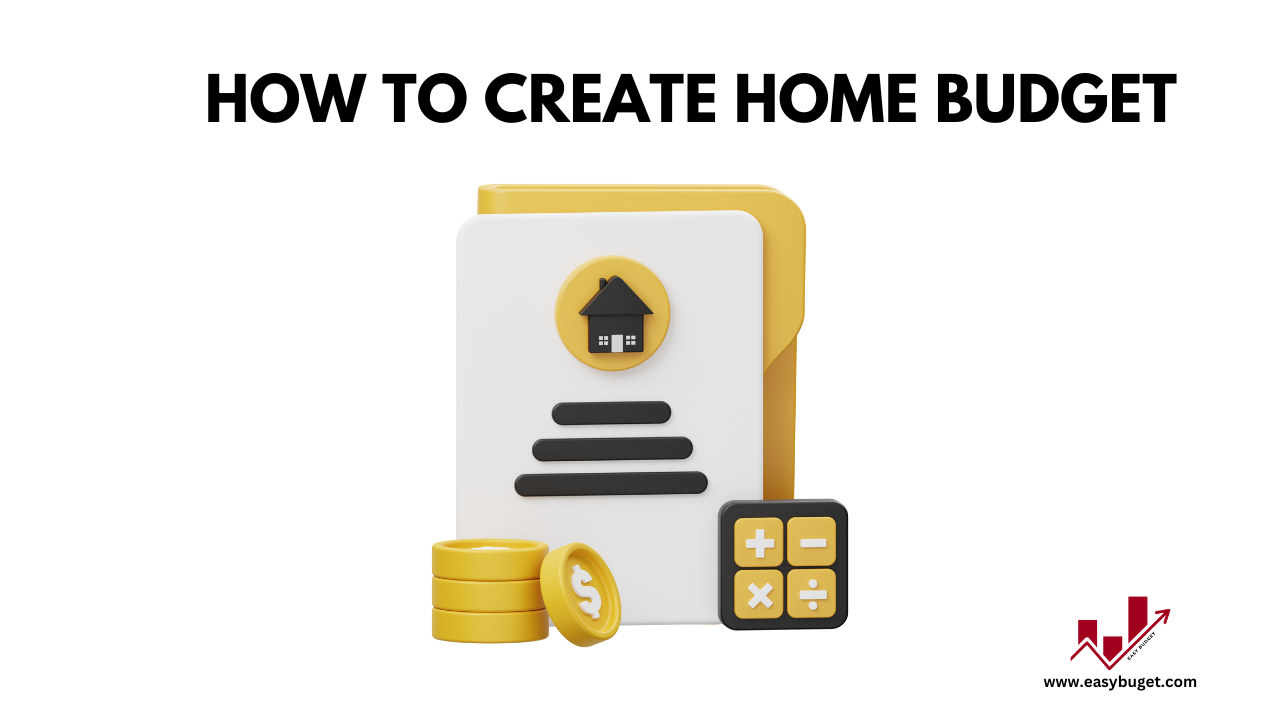Creating a home budget might sound daunting, but it’s one of the most effective ways to take control of your finances. Whether you’re saving for a big purchase, paying off debt, a budget can help you achieve your goals. In this guide, we’ll walk you through how to create a home budget, share tools to make it easier, and provide tips to stick to it. Let’s get started!
Why You Need a Home Budget
A home budget is more than just a spreadsheet—it’s a roadmap for your financial future. Here’s why it’s essential:
- Track Income and Expenses: A budget helps you see where your money is going each month.
- Avoid Overspending: By setting limits, you can prevent unnecessary purchases.
- Save for Goals: Whether it’s an emergency fund or a dream vacation, a budget helps you save systematically.
According to a CNBC article, 60% of Americans don’t have a budget, which often leads to financial stress. Don’t be part of that statistic—start budgeting today!
Steps to Create a Home Budget
1. Calculate Your Monthly Income
- Start by listing all sources of income, including your salary, freelance work, or side gigs. If your income varies, use an average of the last three months.
2. List Your Monthly Expenses
- Break down your expenses into categories:
- Fixed Expenses: Rent/mortgage, utilities, car payments.
- Variable Expenses: Groceries, entertainment, dining out.
- Irregular Expenses: Annual subscriptions, car maintenance.
- Use past bank statements to get an accurate picture.
3. Differentiate Between Needs and Wants
- The 50/30/20 rule is a great framework:
- 50% for needs (rent, utilities, groceries).
- 30% for wants (entertainment, hobbies).
- 20% for savings and debt repayment.
- Learn more about this rule from The Balance.
- Use this 50/30/20 calculator.
4. Set Financial Goals
- Define short-term goals (e.g., saving $1,000 for emergencies) and long-term goals (e.g., saving for retirement).
- Having clear goals keeps you motivated.
5. Track and Adjust Your Budget
- Use budgeting tools like Mint or YNAB to monitor your spending.
- Review your budget monthly and adjust as needed.
Tools and Apps to Simplify Budgeting
Budgeting doesn’t have to be complicated. Here are some tools to help:
- Mint: Tracks spending, creates budgets, and sends alerts.
- YNAB (You Need A Budget): Focuses on giving every dollar a job.
- PocketGuard: Shows how much you can safely spend after bills and savings.
For a detailed comparison, check out this PCMag review of budgeting apps.
Tips for Sticking to Your Home Budget
- Review Regularly: Check your budget weekly or monthly to stay on track.
- Avoid Impulse Purchases: Stick to your shopping list and avoid unnecessary spending.
- Use Cash Envelopes: Allocate cash for discretionary spending like groceries or entertainment.
- Celebrate Wins: Reward yourself when you hit savings milestones.
For more tips, visit Dave Ramsey’s blog on budgeting.
Common Budgeting Mistakes to Avoid
- Underestimating Expenses: Always leave room for unexpected costs.
- Ignoring Irregular Expenses: Plan for annual or semi-annual bills.
- Not Adjusting the Budget: Life changes, and so should your budget.
Learn more about common pitfalls in this Forbes article.
FAQ Section
1. What is the 50/30/20 budget rule?
- The 50/30/20 rule is a simple budgeting framework:
- 50% of your income goes to needs.
- 30% goes to wants.
- 20% goes to savings and debt repayment.
- It’s a great starting point for beginners. Learn more from The Balance.
2. How do I make a simple home budget?
- Follow these steps:
- Calculate your income.
- List your expenses.
- Categorize needs vs. wants.
- Set financial goals.
- Track and adjust regularly.
3. What is the 70/20/10 rule for money?
- This rule allocates:
- 70% for living expenses.
- 20% for savings and investments.
- 10% for debt repayment or donations.
- It’s a variation of the 50/30/20 rule.
4. What are the first 5 things you should list in a budget?
- Start with these essentials:
- Housing (rent/mortgage).
- Utilities (electricity, water, internet).
- Groceries.
- Transportation (gas, public transit).
- Debt payments (credit cards, loans).
Conclusion
Creating a home budget is the first step toward financial freedom. By tracking your income and expenses, setting goals, and using the right tools, you can take control of your money and reduce stress. Remember, a budget isn’t set in stone—it’s a flexible tool that grows with you.
Ready to start? Check out this government resource on personal finance management for more tips and tools.

